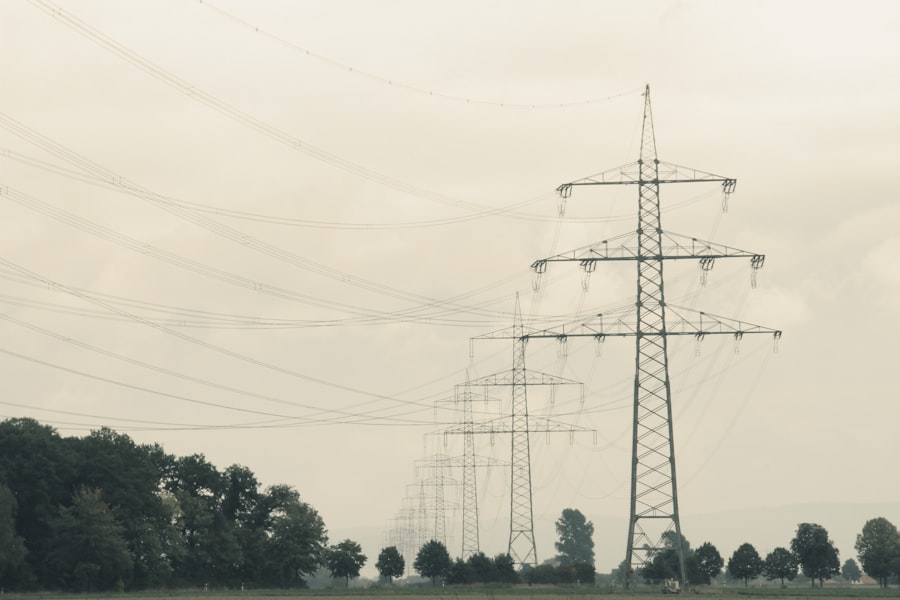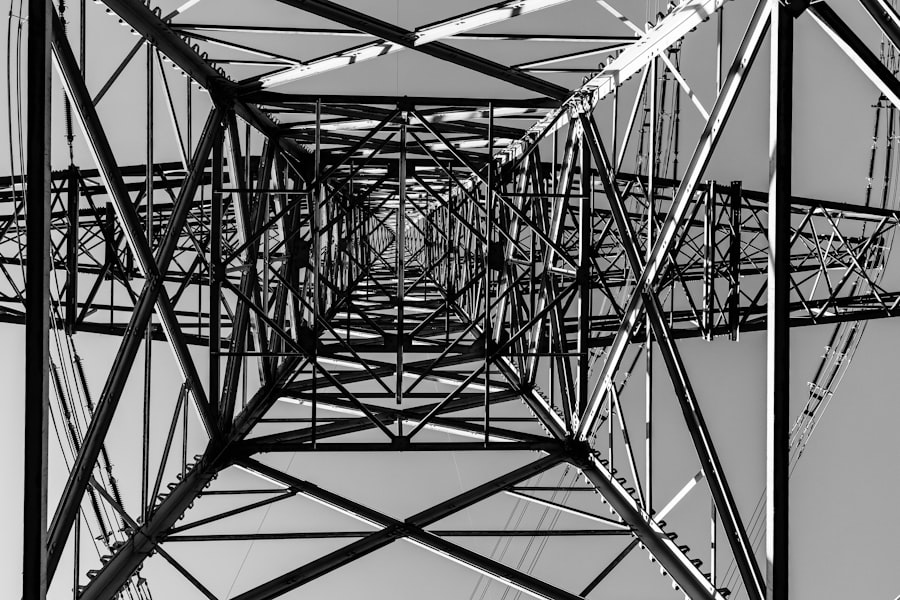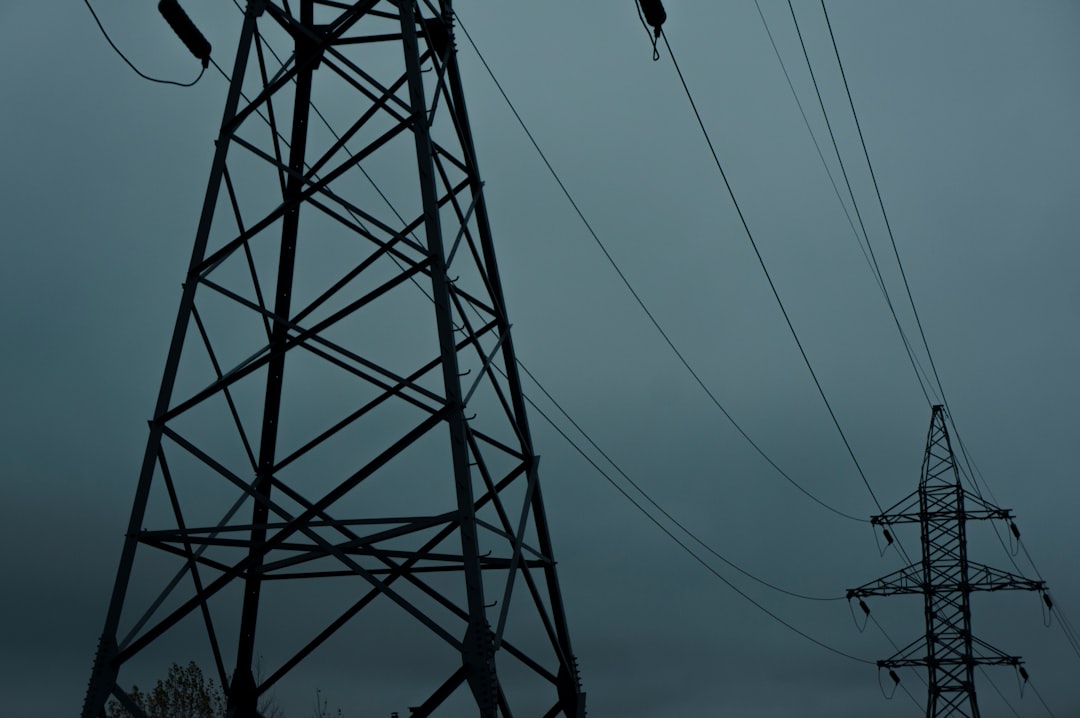The power grid debt crisis represents a significant challenge for many regions around the world, particularly in developing nations where energy infrastructure is often underfunded and overburdened. This crisis is characterized by the accumulation of debt among utility companies, which struggle to maintain and upgrade aging infrastructure while also providing affordable electricity to consumers. The financial strain on these companies can lead to service disruptions, increased rates for consumers, and a general decline in the reliability of the power supply.
As the demand for electricity continues to rise, the urgency to address this crisis becomes increasingly apparent. At its core, the power grid debt crisis is not merely a financial issue; it is also a matter of social equity and environmental sustainability. The inability of utility companies to manage their debts effectively can result in higher costs for consumers, particularly those in low-income communities who are already facing economic hardships.
Furthermore, the crisis can hinder investments in renewable energy sources, which are essential for transitioning to a more sustainable energy future. Understanding the multifaceted nature of this crisis is crucial for developing effective solutions that can stabilize the power grid while ensuring equitable access to energy for all.
Key Takeaways
- The power grid debt crisis stems from financial mismanagement, infrastructure costs, and rising demand.
- Consumers face higher electricity bills and service disruptions due to the debt crisis.
- Governments and regulators are implementing policies and investments to stabilize the power grid finances.
- Renewable energy integration and infrastructure upgrades are key strategies to reduce debt and improve grid resilience.
- Collaboration among utilities, regulators, and consumers, along with international insights, is essential for long-term crisis resolution.
Causes of the Power Grid Debt Crisis
Several factors contribute to the power grid debt crisis, with mismanagement and regulatory challenges being among the most significant. Many utility companies have historically operated under outdated business models that do not account for the rapid changes in energy consumption patterns and technological advancements. This misalignment has led to inefficiencies and increased operational costs, which in turn exacerbate their financial woes.
Another critical factor is the rising cost of energy production and distribution. As fossil fuel prices fluctuate and environmental regulations become more stringent, utility companies face mounting pressure to invest in cleaner technologies while still meeting existing obligations.
This dual challenge can lead to increased borrowing and debt accumulation, as companies seek to finance necessary upgrades without a clear path to profitability. Furthermore, economic downturns can exacerbate these issues, as reduced demand for electricity and increased customer defaults on payments further strain utility finances.
Impact of the Power Grid Debt Crisis on Consumers

The repercussions of the power grid debt crisis extend far beyond utility companies; consumers are often left bearing the brunt of these financial challenges. As utilities struggle with debt, they may resort to raising electricity rates to cover their costs, which disproportionately affects low-income households. These rate hikes can create a vicious cycle where consumers are forced to choose between paying their energy bills and meeting other essential needs, such as housing or healthcare.
Consequently, energy poverty becomes a pressing issue, with many families unable to afford basic electricity services. Moreover, the instability of utility companies can lead to service interruptions and unreliable power supply. Consumers may experience frequent outages or reduced service quality, which can disrupt daily life and impact businesses that rely on consistent electricity.
The uncertainty surrounding energy availability can also deter investment in local economies, as businesses may be hesitant to establish operations in areas with unreliable power infrastructure. Thus, the power grid debt crisis not only affects individual households but also has broader implications for economic growth and community development.
Government Initiatives to Address the Power Grid Debt Crisis
| Initiative | Year Launched | Funding Allocated (in billions) | Key Objectives | Impact Metrics |
|---|---|---|---|---|
| Power Sector Debt Restructuring Program | 2021 | 15 | Restructure outstanding debts of power utilities to improve financial health | Reduced debt by 30%, improved credit ratings of utilities |
| Renewable Energy Integration Fund | 2022 | 10 | Support renewable energy projects to reduce dependency on costly fossil fuels | Increased renewable capacity by 20%, lowered operational costs by 15% |
| Smart Grid Modernization Initiative | 2023 | 8 | Upgrade grid infrastructure to reduce losses and improve efficiency | Reduced transmission losses by 12%, improved grid reliability by 25% |
| Subsidy Rationalization and Tariff Reform | 2021 | 5 | Adjust tariffs to reflect true cost and reduce subsidy burden | Increased revenue collection by 18%, reduced subsidy expenditure by 10% |
| Capacity Building and Governance Enhancement | 2022 | 2 | Improve management and operational efficiency of power utilities | Enhanced operational efficiency by 20%, reduced administrative costs by 8% |
In response to the growing power grid debt crisis, governments around the world have begun implementing various initiatives aimed at stabilizing utility companies and ensuring reliable energy access for consumers. One common approach involves providing financial assistance or restructuring options for struggling utilities. By offering grants or low-interest loans, governments can help alleviate some of the immediate financial pressures faced by these companies, allowing them to invest in necessary infrastructure improvements without further burdening consumers.
Additionally, regulatory reforms are being pursued to create a more favorable environment for utility companies to innovate and adapt. This may include revising rate-setting mechanisms to better reflect the true cost of energy production or incentivizing investments in renewable energy sources. By fostering a more supportive regulatory landscape, governments can encourage utilities to adopt sustainable practices that not only address their debt issues but also contribute to long-term environmental goals.
Role of Renewable Energy in Resolving the Power Grid Debt Crisis
Renewable energy sources play a pivotal role in addressing the power grid debt crisis by offering a sustainable alternative to traditional fossil fuels. As technology advances and costs decrease, renewable energy has become increasingly viable for utility companies seeking to diversify their energy portfolios and reduce reliance on expensive fossil fuels. By investing in solar, wind, and other renewable sources, utilities can lower their operational costs over time while also contributing to environmental sustainability.
Moreover, integrating renewable energy into the power grid can enhance resilience and reliability. Distributed energy resources, such as rooftop solar panels or community wind farms, allow for localized energy production that can reduce transmission losses and improve overall grid stability. This decentralization not only helps mitigate financial risks associated with centralized fossil fuel generation but also empowers consumers by providing them with more control over their energy sources.
As utilities transition towards renewable energy, they can potentially alleviate some of their debt burdens while simultaneously addressing climate change concerns.
Strategies for Reducing Debt in the Power Grid

To effectively tackle the power grid debt crisis, utility companies must adopt comprehensive strategies aimed at reducing their overall debt levels. One key approach involves improving operational efficiency through technological advancements and process optimization. By investing in smart grid technologies and automation, utilities can streamline their operations, reduce waste, and ultimately lower costs.
Another important strategy is diversifying revenue streams beyond traditional electricity sales. Utilities can explore opportunities in energy services, such as demand response programs or energy efficiency initiatives that help consumers reduce their overall consumption.
By offering value-added services that align with consumer needs, utilities can create new revenue sources that contribute to debt reduction efforts. Additionally, partnerships with private sector entities or community organizations can facilitate innovative financing solutions that support infrastructure investments without placing undue burdens on consumers.
Importance of Infrastructure Investment in Resolving the Power Grid Debt Crisis
Infrastructure investment is critical for resolving the power grid debt crisis and ensuring a reliable energy supply for consumers. Aging infrastructure often leads to inefficiencies and increased maintenance costs, which can exacerbate financial challenges for utility companies. By prioritizing investments in modernizing transmission lines, substations, and distribution networks, utilities can enhance their operational capabilities and reduce long-term costs associated with outages or repairs.
Furthermore, investing in infrastructure improvements can stimulate economic growth within communities. Upgraded power systems create jobs during construction and maintenance phases while also attracting businesses that require reliable energy sources. This economic development can lead to increased tax revenues that support local governments and further investment in public services.
Thus, infrastructure investment not only addresses immediate financial concerns but also lays the groundwork for sustainable growth and development in the future.
Collaboration between Utility Companies and Regulators to Address the Power Grid Debt Crisis
Collaboration between utility companies and regulators is essential for effectively addressing the power grid debt crisis. A cooperative approach allows both parties to share insights and develop solutions that benefit consumers while ensuring the financial viability of utilities. Regulators play a crucial role in establishing fair rate structures that reflect the true cost of providing electricity while incentivizing utilities to invest in necessary upgrades.
Moreover, open communication between utilities and regulators fosters transparency and accountability within the industry. By engaging stakeholders in discussions about challenges and potential solutions, both parties can work together towards common goals that prioritize consumer interests while addressing financial sustainability concerns. This collaborative framework is vital for creating a resilient power grid capable of meeting future demands without succumbing to debt-related crises.
Consumer Education and Empowerment in Resolving the Power Grid Debt Crisis
Consumer education plays a pivotal role in resolving the power grid debt crisis by empowering individuals to make informed decisions about their energy usage. Many consumers remain unaware of how their choices impact both their bills and the overall health of the power grid. By providing resources and information about energy efficiency practices or available assistance programs, utilities can help consumers reduce their consumption and manage costs more effectively.
Additionally, fostering consumer engagement through programs that encourage participation in demand response initiatives or renewable energy adoption can create a sense of ownership over energy resources. When consumers feel empowered to take control of their energy usage, they are more likely to support policies that promote sustainability and financial stability within the power sector. Ultimately, an informed consumer base is essential for driving positive change within the industry while alleviating some of the pressures associated with the power grid debt crisis.
International Perspectives on Resolving Power Grid Debt Crisis
The power grid debt crisis is not confined to any single region; it is a global issue that requires diverse perspectives and solutions from around the world. Countries facing similar challenges have adopted various strategies tailored to their unique circumstances. For instance, some nations have successfully implemented public-private partnerships that leverage private investment for infrastructure improvements while maintaining public oversight.
International collaboration also plays a crucial role in sharing best practices and lessons learned from different regions. By engaging in knowledge exchange forums or cooperative initiatives focused on energy transition strategies, countries can benefit from each other’s experiences in addressing power grid debt challenges. This global perspective fosters innovation and encourages countries to adopt more sustainable practices that align with international climate goals while addressing local needs.
Future Outlook for the Power Grid and Debt Crisis Resolution
The future outlook for the power grid amid ongoing debt crises presents both challenges and opportunities for stakeholders across the industry. As demand for electricity continues to rise alongside increasing concerns about climate change, utility companies must adapt quickly to evolving market conditions while managing their financial health effectively. The integration of renewable energy sources will likely play a central role in shaping this future landscape as utilities seek ways to diversify their portfolios and reduce reliance on fossil fuels.
Moreover, advancements in technology will continue to transform how electricity is generated, distributed, and consumed. Smart grids equipped with advanced monitoring systems will enable utilities to optimize operations while providing consumers with real-time data about their usage patterns. This shift towards greater transparency will empower individuals to make informed choices about their energy consumption while supporting efforts aimed at reducing overall debt levels within the sector.
In conclusion, addressing the power grid debt crisis requires a multifaceted approach that encompasses financial restructuring, regulatory reform, infrastructure investment, consumer education, and international collaboration. By recognizing the interconnected nature of these challenges and working together towards common goals, stakeholders can pave the way for a more sustainable energy future that benefits both consumers and utility companies alike.
One potential solution to addressing the power grid debt problem can be found in the article on wealth generation strategies. By exploring innovative financing options and investment models, stakeholders can better manage the financial burdens associated with maintaining and upgrading the power grid. For more insights on this topic, you can read the article here: How Wealth Grows.
WATCH THIS! The Debt Trap: Why Private Equity Wants Your Power Company
FAQs
What is the power grid debt problem?
The power grid debt problem refers to the financial challenges faced by utilities and grid operators due to accumulated debts. These debts often arise from infrastructure investments, maintenance costs, and operational expenses that exceed revenue, leading to financial strain.
What causes the power grid debt problem?
Key causes include aging infrastructure requiring costly upgrades, increased demand for electricity, regulatory changes, investment in renewable energy integration, and sometimes inefficient management or billing practices.
How does power grid debt affect consumers?
High levels of debt can lead to increased electricity rates, reduced investment in grid reliability and modernization, and potential service disruptions. Consumers may face higher bills as utilities attempt to recover costs.
What are common strategies to fix the power grid debt problem?
Strategies include restructuring debt, increasing tariffs or fees, government subsidies or bailouts, improving operational efficiency, investing in smart grid technologies, and encouraging private sector investment.
Can renewable energy integration help solve the power grid debt problem?
Yes, integrating renewable energy can reduce operational costs over time and improve grid efficiency. However, initial investments can be high, so careful planning and financing are necessary to avoid exacerbating debt issues.
What role do government policies play in addressing power grid debt?
Governments can implement regulatory reforms, provide financial assistance, incentivize investments in grid modernization, and establish frameworks for sustainable tariff structures to help utilities manage and reduce debt.
Is privatization a solution to the power grid debt problem?
Privatization can introduce efficiency and capital but may also lead to higher costs for consumers if not properly regulated. Its effectiveness depends on the local context and regulatory environment.
How long does it typically take to resolve power grid debt issues?
Resolution timelines vary widely depending on the severity of debt, regulatory support, investment levels, and economic conditions. It can take several years to stabilize finances and implement necessary reforms.
What impact does power grid debt have on energy reliability?
High debt levels can limit funds available for maintenance and upgrades, potentially leading to more frequent outages and reduced reliability of electricity supply.
Are there international examples of successfully fixing power grid debt problems?
Yes, several countries have restructured their power sectors through reforms, investments, and policy changes to address debt issues. Examples include reforms in parts of Europe, Asia, and Latin America that improved financial health and grid performance.
